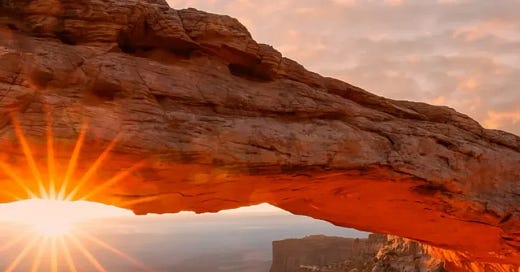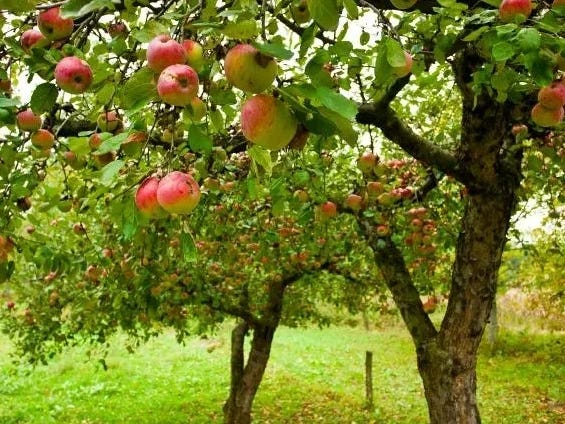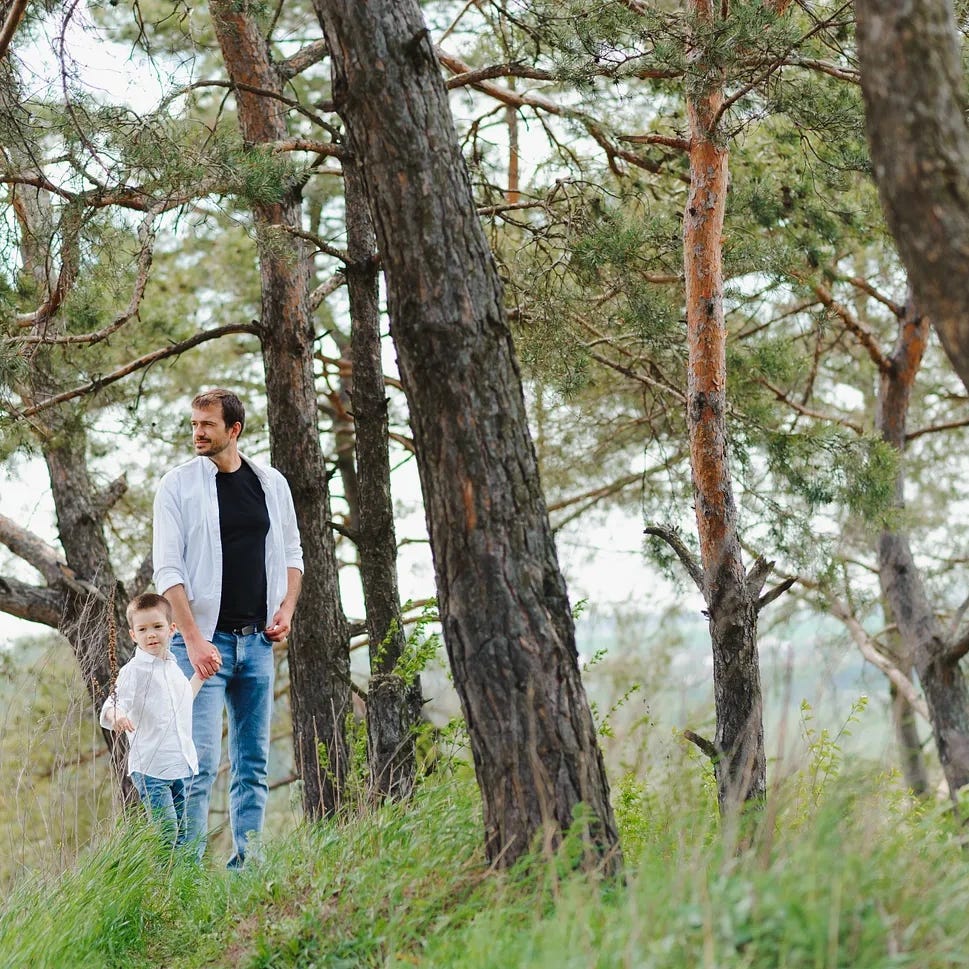There are places we never forget.
A patch of woods behind a childhood home. The wide sky over a summer lake. A rocky hillside that shimmered with late light. These places don’t just exist on a map; they live in us. They return in moments of joy or sorrow, offering what Charlotte Mason called a *“balm and blessing”—*especially later in life.
Landscapes hold power
They draw us out of ourselves. They hush us into stillness. They awaken awe.
But a landscape doesn’t have to be grand or far away. It might be the small, secret space of an old apple tree—the one I climbed as a child to escape the rough play of four brothers. For my husband, it’s his grandparents’ garden in Ontario: rows of peonies, gladiolas, and raspberries—a place of color, quiet, and belonging.
Some landscapes we encounter together—a family trip to the mountains, a visit to a national park, or a simple discovery walk close to home. And these, too, stay with us.
Throughout childhood we gather a treasury of remembered places. Over time, they quietly shape who we become.
Spanish philosopher Ortega y Gasset once said:
Tell me the landscape in which you live, and I will tell you who you are.
He believed that the land we dwell in forms not just our surroundings, but something deep within. We’re not separate from the world around us—we grow inside it. It shapes how we see, what we love, even how we live.
Whatever the form—mountains, meadows, backyards—these are landscapes of the heart. We return to them, even if only in memory. And in times of weariness or joy, they offer solace.
Some are vast and wild—mountains that make us feel small in the best way. Others are tucked away—a mossy hollow or a sun-warmed stone. Whether sweeping or secret, each one is a glimpse, a whisper, an image of the Great God who made the world and called it good.
And often, these places are not just found—they are given. They meet something deep in us. And we remember
Landscapes Shape Us
Theologian Belden Lane has written powerfully about sacred geography—those thin places where the veil between the visible and invisible seems to part. He recalls sitting alone in the Canyonlands of Utah (see header image) at dusk. The air went still. There was no sound, no movement—just a deep awareness of presence.
Lane’s work echoes others who have experienced the mystery of landscape as more than scenery.
I recall Annie Dillard’s words in Pilgrim at Tinker Creek, as she kneels beside a small trickle of water—nothing grand, just the ordinary world shining in its fullness. And yet in that moment, she is pierced by beauty so fierce and unlooked for, it becomes something like revelation—holy, weighty, unforgettable.
“I had been my whole life a bell, and never knew it until at that moment I was lifted and struck.”
Wendell Berry, in his essay A Native Hill, listens for the silence of forests and fields—walking familiar ground not just with his feet, but with reverence and attention born of long love. Kathleen Norris, in Dakota: A Spiritual Geography, writes of returning to the plains and discovering how the land shaped her.
Just a Girl and Her Mountains
Just this week I read a Substack post by Brooke Zoller of The Pondering Scottie that echoed these ideas. Brooke writes of moving to Colorado as a child, where Pikes Peak became a daily presence, looming in the window of her family’s kitchen—its 14,110 feet a quiet, constant guardian. What first captivated her later came to shape her.
I don’t have to go on a pilgrimage to the desert or the mountains to meet with God. But when I’m there, I see myself clearly. I feel Him closely. I remember rightly…
Isn’t that the invitation landscapes offer us—and our children?
To see ourselves clearly.
To feel God closely.
To remember rightly.
👉 Read Brooke’s full note here
Each of these voices reminds me: the outer landscape often mirrors the inner. The soul needs space—to stretch, to rest, to remember what matters.
A Treasury of Images
Charlotte Mason believed that children should be trained in knowledge and nourished with beauty—images and impressions to carry with them always.
“Perhaps we might secure at least a hundred lovely landscapes too,—sunsets, cloudscapes, starlight nights. At any rate he should go forth well furnished because imagination has the property of magical expansion, the more it holds the more it will hold.”
— Philosophy of Education, p. 43
What a vision.
Children going out into the world well furnished—not just with knowledge, but with a heart full of wonder, beauty, and remembered landscapes.
Do You Remember?
Think back to your own childhood.
Where did you go when you needed space to think, to dream, to cry?
Where did wonder find you?
Maybe it was a corner of the backyard, a shoreline of stones, a tree to climb, or a window seat with a view of the changing sky.
These are not just memories. They are maps. And they still speak.
Today, children and adults alike are overstimulated, yet undernourished in the deepest places. Screens and noise flatten our sense of place and mystery.
But landscapes—real and remembered—resist that flattening.
They call us back to our senses.
They awaken reverence.
They whisper: you belong here.
As we walk through the woods, or stand beneath stars, or recall the hush of a childhood pond, something shifts. The soul lifts. The heart remembers.
This is what we want for our children—not just information, but orientation.
Not just education, but a rooted way of seeing the world.
Begin This Week
Begin this week by considering one or two of these simple ways to nurture the inner landscape—for yourself and your child:
Recall a childhood landscape—a place that shaped you. Write it down. Describe what you saw, heard, felt.
Visit a nearby natural place—not for a lesson, but just to be. Let your children play. Let yourself notice.
Name the beauty aloud—“Isn’t this beautiful?” “This tree is older than us.” “Look how the sky is changing.”
Make a little space—a short walk, a porch sit, a glance out a window—to let the world speak to your heart.
So, go outside.
Remember your own places of wonder.
And make space for your children to find theirs.
They will carry those landscapes with them.
Grateful for your readership.
Sheila Carroll
Living Books Press
Are you receiving Morning Basket in your inbox yet?
Each Monday, I share gentle homeschool wisdom, practical ideas, and encouragement to start your week well. It’s free—and made to nourish your heart as you teach and grow.
👉Join us. SUBSCRIBE HERE









So thought-full and beautiful! Thank you. Nature resonates (like that bell) with our hearts so much more than a cell phone.
Sheila I love this one! 💗